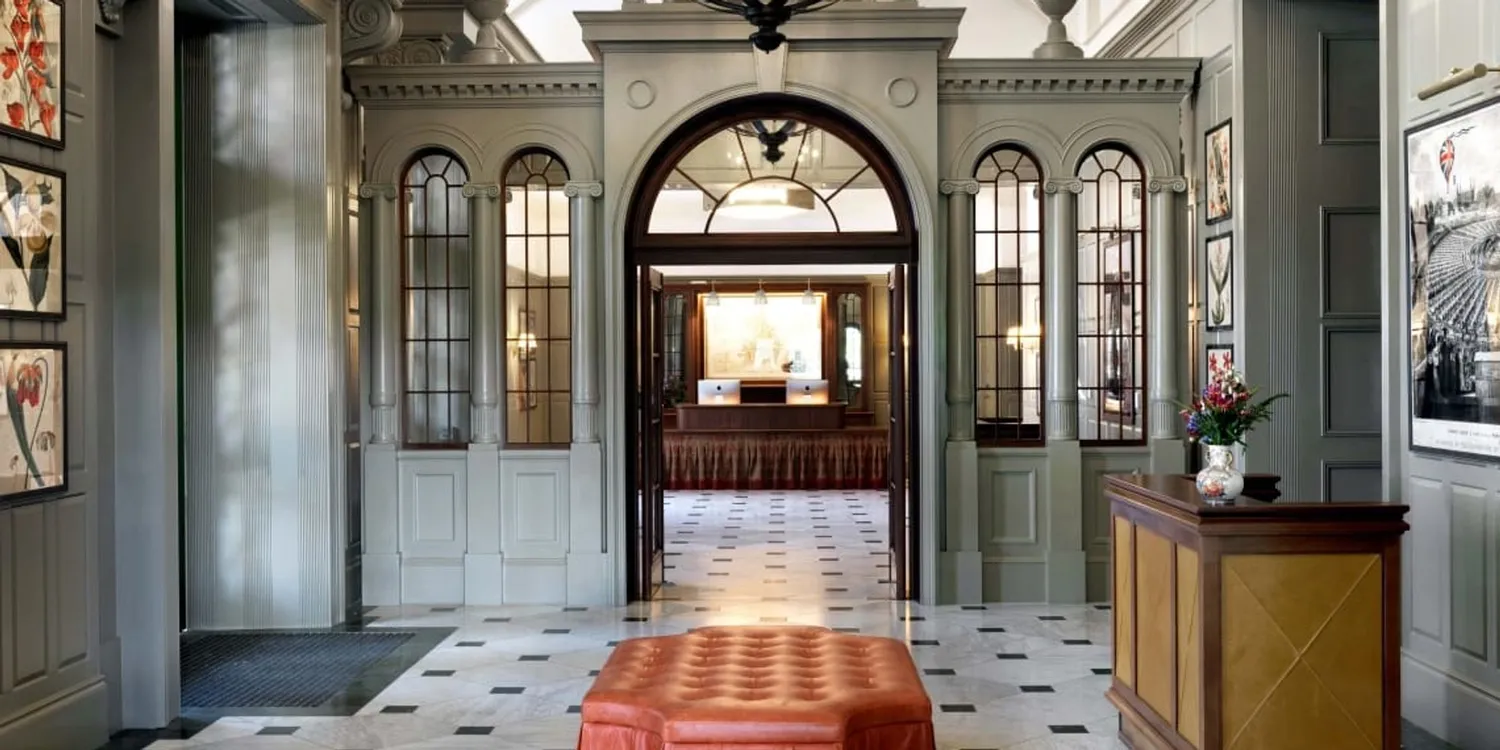13/03/2019
Cambridge’s oldest hotel, the University Arms: where the learned stay in luxury.
The property has just undergone a US$100 million refurbishment, working with architect John Simpson and interior designer Martin Brudnizki. The city centre, with its historic colleges, are on the doorstep What’s the story?The oldest hotel in Cambridge, England, the University Arms began life as a coaching inn in 1834 and has reopened following a four-year, £80 million (US$102 million) refurbishment. That is a lot of money; what’s changed? Well, the original facade overlooking Parker’s Piece (a green space that was the scene of Queen Victoria’s coronation banquet) has been retained but the interiors have been rebuilt and an incongruous 1960s extension has been demolished. The building that has risen in its place is in keeping with the original style. Soit looks authentic?
Architect John Simpson has worked on the palaces Buckingham and Kensington, as well as a couple of Cambridge University colleges, so he knows a thing or two about classical refurbishment. His design for the University Arms includes a striking porte-cochère –a columned, covered carriage entrance, for cars rather than horses these days –and a grand lobby. It’s hard to believe the new addition hasn’t been standing since the days of William IV.
What about the interiors? They’re down to Martin Brudnizki, designer du jour (responsible for the new Annabel’s clubhouse, in Mayfair, and the refreshed Ivy restaurant, in Covent Garden). The feel is of a contemporary private members’ club: Farrow and Ball-painted walls; reclaimed wooden floors; antique rugs; on-trend ottomans and armchairs; and sofas that beg to be sunk into.
What about the rooms? There are 192 of them and they span the range from cosy to superior), and include 12 suites named after Cambridge alumni; it’s not often you’re presented with the chance to get inside Charles Darwin, Virginia Woolf or Stephen Hawking. Bathrooms have black-and-white tiles and underfloor heating, while 26 of them boast (roll-top, claw-foot) baths as well as showers.What’s the food like? The restaurant, Parker’s Tavern, takes inspiration from your typical college dining hall –stained-glass windows and leather bench seating –but the menu is a modern take on traditional British fare, East Anglian produce used to deliver dishes such as smoked trout, potted shrimp, a daily roast trolley and pie of the day. Cambridge burnt cream pudding is a local take on crème brûlée.
Is there a bar? As the name suggests, Parker’s Tavern is split between a restaurant and a sizeable lounge bar, where the members’ club atmosphere is strong. The bar itself is lined with vintage-style leather stools and there are plenty of velvet sofas and a vast spirits list –but strictly no beer on tap. Other places exist for such loutishness! What about my fellow guests? You’ll rub shoulders with academics, students being treated by their parents, tourists and techies (Cambridge is becoming known as the Silicon Valley of Britain).What is there to do?The hotel is located inthe city centre so the historic colleges are but a short stroll away –ortake one of the hotel’s bicycles, fetching in their signature light Cambridge blue.
Tours as well as punts on the River Cam can be arranged; the hotel will even whip you up a picnic.If you’re looking for the willow tree celebrated in Xu Zhimo’s 1928 poem,Second Farewell to Cambridge, you’re out of luck: it has recently been removed, but a cutting has been planted nearby, at the newly opened memorial garden in the poet’s alma mater, King’s College.
Anything else I should know?Playing on the learned location, the hotel has made books a feature. Rather than the untouched, artful collection usually on show at boutique hotels, the Arms’ sitting area, The Library, has a selection –curated by the Heywood Hill booksellers, of London –that is likely to be actually read.Each of the suites includes literature by or about their namesake while the other bedrooms all have copies of Wind in the Willows, by Kenneth Grahame;Porterhouse Blue, byTom Sharpe; and Hilaire Belloc’s Cautionary Verses.
Review by Gillian Rhys
